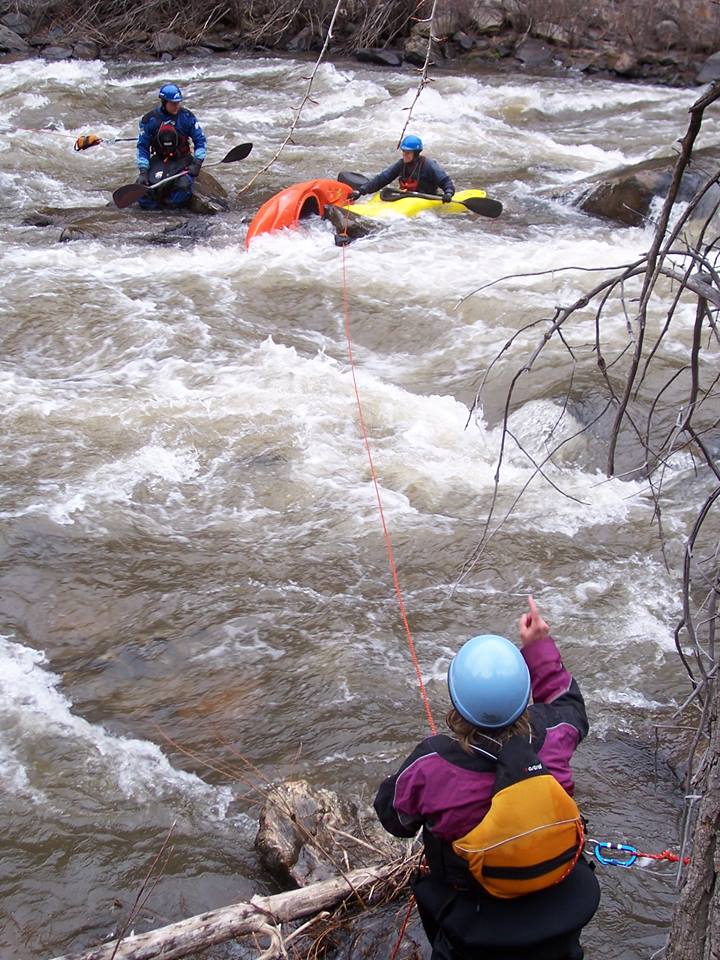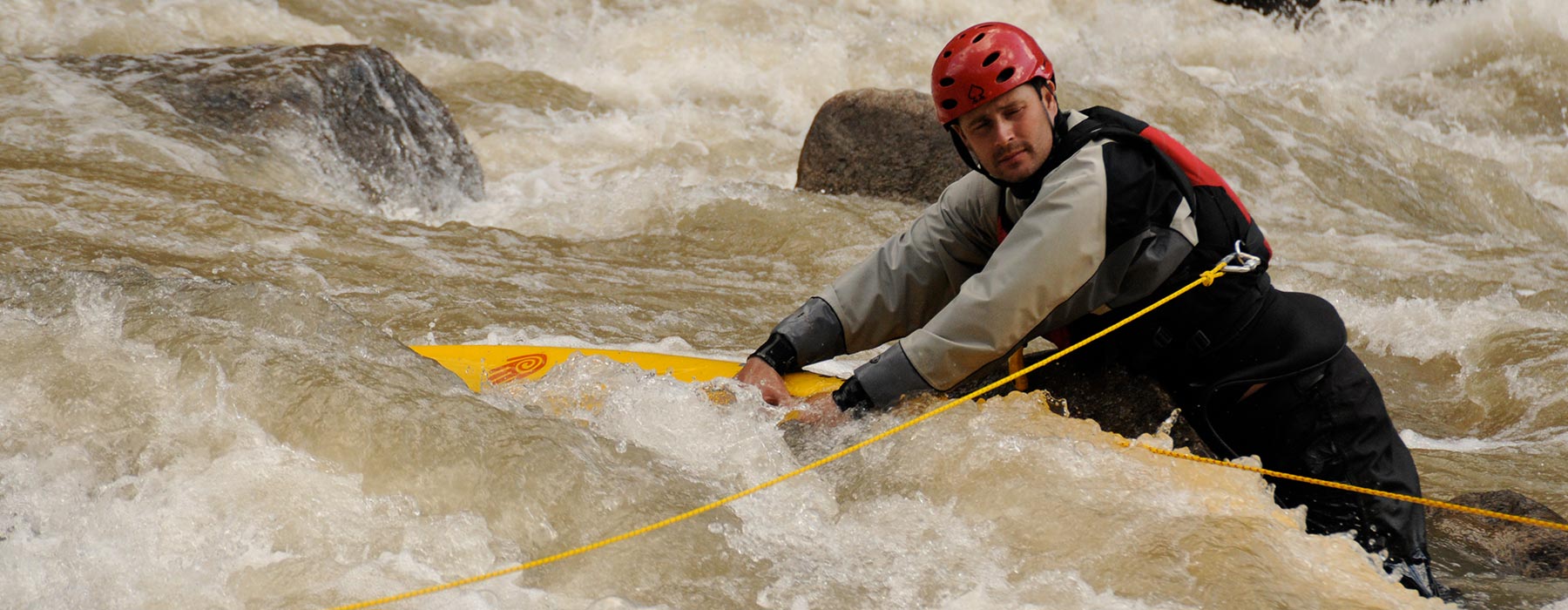Retrieve swamped boats and and stranded swimmers using the current to your advantage.
Your kayak is pinned and swamped with water. Your crew quickly connects a rope to it and starts pulling from shore. The boat is free, and you think it’s all good. Then the current grabs the boat and starts bringing it down river, away from you and your friends. A boat full of water going along with the current can easily deliver a thousand pounds of force depending on the speed of the current. Even four strong kayakers won’t be able to pull that to shore.
The key to bringing pinned boats, rafts, or even swimmers to shore safely and effectively is to be in a position where the current helps you. If you haven’t guessed already, that means you need to be downstream of the boat [or person] you want to rescue. “How far downstream?”, you say. That depends on how much current there is. The more current, the further downstream you need to be. You want to be pulling the boat into an eddy before it floats past your position. As soon as it passes you, the river will start fighting instead of helping.
The trouble with this idea is that if you are rescuing a pinned boat, you can’t pull it off the rock if you are downstream. You will simply pull it more into the rock and not off the rock. Typically the best position to be in to free a pinned kayak is on shore slightly upstream of the boat. So how do we pull the boat off the rock from upstream, then retrieve it from downstream. Obviously the boat isn’t going to wait for us to move downriver after we haul it off the rock.
This is where teamwork and proper equipment are crucial. The technique I like to use for boat recovery is called the Downstream Recovery Line, or DRL and requires two quality throw ropes, and works best with at least two people. (though one person can successfully execute a DRL, it takes a bit more set up)
Setting up and executing the Downstream Recovery Line (DRL)
Connect a rope to the pinned kayak and bring the end of the rope to shore and slightly upstream of the boat. (we’ll talk about the best ways to attach the rope and techniques for releasing the pinned boat in another blog article) The person on the end of this rope will be Roper 1.
Connect the DRL: Take a second rope with a carabiner attached to the end. Clip the carabiner onto the first rope so it can slide along it. Then take the end of the DRL as far downstream as it can reach. (make your rope longer by connecting another one if needed) The carabiner will slide roughly to the middle of the first rope.
When both ropers are ready, roper number 1 starts pulling to free the kayak from it’s pin.
As soon as the boat comes free, the DRL roper starts pulling in as fast as they can. Roper number 1 keeps pulling the boat across the river until the current grabs it. Then Roper number 1 slowly eases out the rope and the DRL pulls the boat to shore easily and with the current.
DONE! You just rescued a kayak full of water without needing to set any anchors and without the chance of being pulled into the river.
Do I always need a DRL for boat recovery? : Not always, but it’s always a good backup even in cases where it’s not needed. If the current isn’t super strong or if the pinned boat is very close to shore, one rope may be totally sufficient. The key is to imagine how it will play out. And never underestimate the power of the river. It’s typically stronger than it looks.
Recommended gear for this technique:
1. 60 foot or longer throwrope (everyone in the group should have at least one.) Spectra line is better, because it doesn't stretch, but not necessary. I like the Salamander Rapid Fire throw rope best because it's always with you. You wear it around your waist, and the throw bag disconnects from the belt when you need it. That way you are not throwing the belt too. Click here to see this throw rope. I normally have the Rapid Fire on my waist, and then a second rope such as the Big Mouth in my boat for an additional rope.
2. Carabiners. Locking or non-locking. It doesn't really matter. I like Locking biners, but the grit from the river can get into the mechanism and freeze it up (some are better than others). So they require frequent cleaning. For that reason, I usually go non-locking. Click here to see some good locking and non-locking caribiners.
3. Rescue PFD. This is an essential tool for river runners beyond beginner level. There are many great options. The ones I've loved are the Kokatat Maxximus Centurion and the Astral Green Jacket.



Comments